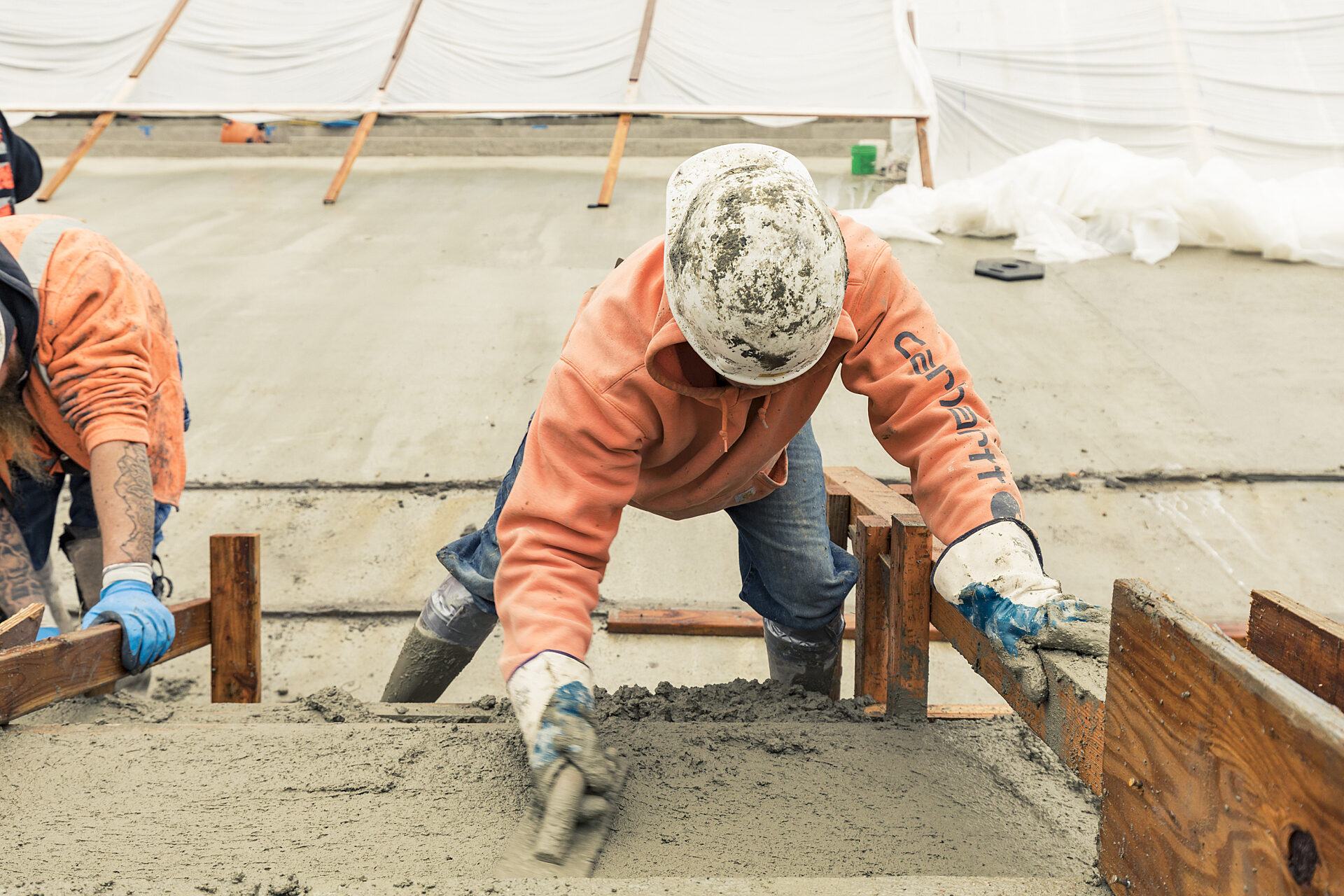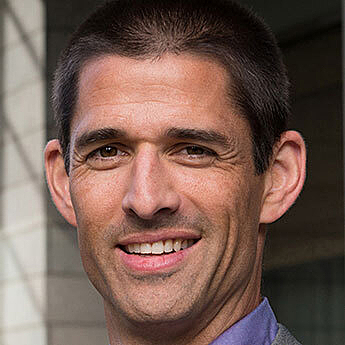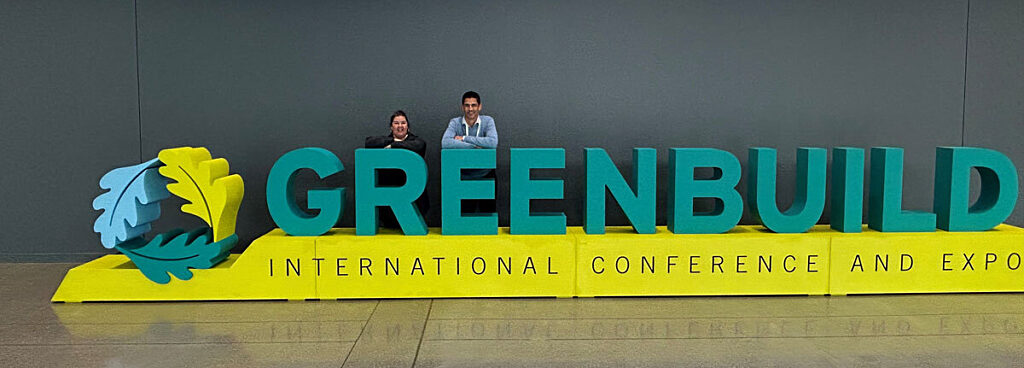Sustainability

News 03.13.2024
Concrete + Carbon Reduction: Challenges, Innovations, and a Sustainable Future
NAIOP WA blog post explores the role concrete and cement can play in reducing embodied carbon in our buildings.
NAIOP WA
External Source


The message at the 2022 Greenbuild International Conference & Expo was clear: The world of sustainable construction demands higher standards, expectations, and clarity in approach. This is an urgent need given the increasing effects of climate change, degrading ecosystems, and risks to human health.
Further, environmental priorities are closely tied to social ones. This brings a heightened focus on environmental, social, and corporate governance, or ESG, for organizations of every kind.
What does this mean for a general contractor like us and our partners? How can we lead with intention and results? Here are some of our top takeaways from the Conference.

Sustainability Manager Laura Soma + Principal Bryan Haakenson at Greenbuild 2022.
Many construction clients [e.g. developers, property owners, etc.] now track their ESG performance and ask their contractors and designers to do the same. Among the performance factors are staff diversity, equitable subcontracting, embodied carbon in new buildings, future building performance, and vehicle and equipment fleets.
Others might start soon. A recent White House executive order mandates that federal agencies track climate risks for their operations and in the industries they oversee. Washington State is working on many fronts to reduce emissions by 95% by 2050 including new building codes and a cap and trade system. A proposed SEC rule might require investment funds to report certain ESG factors. The list goes on.
The sooner you begin tracking key factors the better. Don't wait for an RFQ.
One speaker pointed out that 88% of corporations have established plans for carbon reduction, but only 19% have funded ways to get there. Yet real investment—better buildings, better power sources, etc.—will be necessary. This will cost money, with long payback periods. Mandates and incentives will be important to close the gap.
Here's an added incentive: One speaker projected an eventual 30% reduction in building valuations for those without plans to hit net zero. They'll be harder to lease and need upgrades sooner or later.
We need to be honest about our challenges and avoid rosy false impressions—the goal is to reduce climate change, not to look good on paper. This effort needs to begin with metrics since it is hard to reduce what you don't measure.
General contractors currently measure carbon impacts based on three scopes:
Every general contractor needs to focus on all three, but Scope 3 is the most challenging. The greatest source of our emissions is also the one that is not 100% in our direct control.
Construction clients are already asking tougher questions and expecting more. So are building tenants. As their reporting needs get more specific, so will their questions to contractors and brokers.
In new construction, many jurisdictions are already banning fossil fuel based, heavy carbon generating systems such as natural gas for heating and cooking, favoring electrical systems supplied by hydro, solar, and wind. The latter are far more carbon friendly. But what about existing buildings? Who pays the transition costs? Do we need better incentives to drive change, since fossil fuels can be cheaper than electricity in many regions?

Hydro, solar, and wind power are more carbon friendly, but more difficult to incorporate into existing buildings.
We'll need a lot more innovation in materials and methods. Concrete mixes are one example. As speaker Don Davies from MKA pointed out, contractors and suppliers need to work together to find ever-better ways to align mixes with carbon goals, curing times, and schedules.
Remember to involve building occupants and monitor satisfaction. Efficient systems don't mean much if they underperform and people bring lamps and space heaters to supplement inadequacies. People will reinforce and support innovative solutions and maybe even cut some usage if they understand the "why."
Any building demolition involves tremendous waste, even with recycling. However, this changes if materials are designed for easy reuse and repurposing. For example, you can use screws to install acoustical wall panels so they can be removed and reinstalled whole, instead of becoming landfill or recycled as scrap.
Initially these approaches might involve a premium, but we'll find efficiencies with an intentional program. Architects and general contractors can work together to manage collective risk attached with reuse. Municipalities or third parties can organize material exchanges. New materials and methods will be developed with deconstruction in mind. Perhaps we can make deconstruction the norm, and municipalities will grant deconstruction rather than demolition permits!
We can also improve recycling practices. Sending everything to a recycler doesn't count if they can't separate or use what you send. Engage your waste hauler early and often to find out what is currently accepted for recycling. Also make sure your crews and subcontractors put their waste materials into the right bins and are responsible for reducing any unnecessary packaging before it enters your site.

For effective recycling, engage your waste hauler early and often. Monitor recycling bins for proper material placement.
Do the easy things too. For example, on one recent project GLY provided all craft and salaried personnel with reusable stainless steel water bottles, banned single-use bottles from the jobsite, and installed rechargeable, battery-operated water dispensers to aid in refilling. Hundreds of single use plastic bottles were saved due to these efforts.
While conversations are happening on a variety of social issues, performance is lagging. Development often gravitates toward less-expensive, easier to develop sites where current occupants will be displaced. That may help ROI but impacts communities here and elsewhere. The nation is 7,000,000 units behind in affordable housing, and even more lacking in affordable childcare. The face of corporate America is still typically white males, while only 23% of US business executives are women. That's just a few points out of many. A lot of hard work remains.
More and more projects attempt to address these issues. For example, one project in San Francisco, designed by Mithun, mixed 127 affordable apartments and a childcare center with the lowest-possible energy bills for occupants. Use of electrical vs gas fired equipment reduces its operational carbon footprint, and a large PV array supplies 100% of plug load power. The approach is unusual but successful due to collaboration with a community action focus group, the developer, and the City to implement design solutions that would achieve their goals.
Public policy, client priorities, and private investment dollars will increasingly align with today's conversations on several fronts. We're seeing this in the Seattle/Bellevue area already, including public and corporate funding for crucial needs such as affordable housing. The incorporation of Mary’s Place into Amazon's downtown campus is just one example.

Amazon donated eight floors of one its Denny Triangle towers [Block 21] to Mary’s Place – rent free, forever.
When Is a Good Time to Act?
Now! Every week brings new signs of speeding climate change, along with new ways to reduce its worst effects. Every commitment and innovation brings new hope. Likewise the urgency is clear on affordable housing and social equity.
But it won't be automatic. ESG needs to be a top-down mandate in every organization, not just an enthusiasm for a few. Hard choices will be necessary.
Our industry can be a hero in this story. Will we?
Tags:

Sustainability Manager
LEED AP BD+C
It’s no wonder that Laura’s passion is helping people find their potential. She’s worked hard to creatively forge her own career path and achieve her goals. She is active in a number of industry groups and peer networks focused on green building and leads GLY’s internal sustainability efforts. Her background as a Project Manager allows her to connect with clients and project teams to drive sustainability project goals while keeping budget and schedule at the forefront. Laura brings her love of responsible practices [and infectious good spirits] to every project.

Principal+Senior Project Manager
LEED Green Associate
A Northwest native who embodies every aspect of GLY’s collaborative, community-centered approach, Bryan provides leadership on projects in the heart of thriving residential, educational, and corporate campuses that are fully occupied during construction. His unique skills, personality, and temperament make him ideally suited to work within occupied settings to safely and expediently deliver new construction nestled in with renovated spaces. Bryan oversees GLY’s Sustainability Advocacy Group and helps identify and implement strategies that reduce GLY’s operational carbon footprint. He and his family enjoy all the outdoor activities the PNW has to offer, including boating in the summer and skiing in the winter.